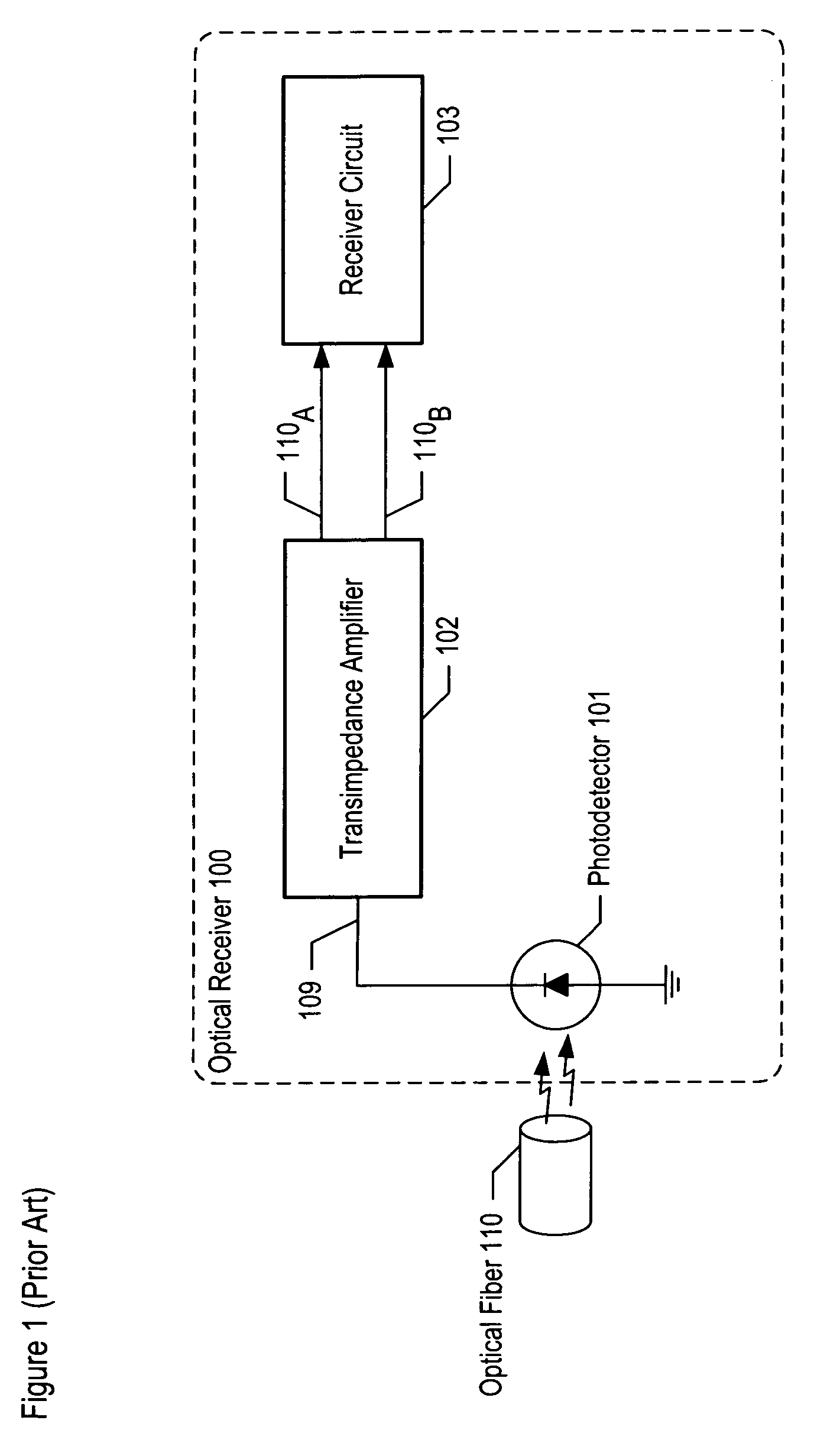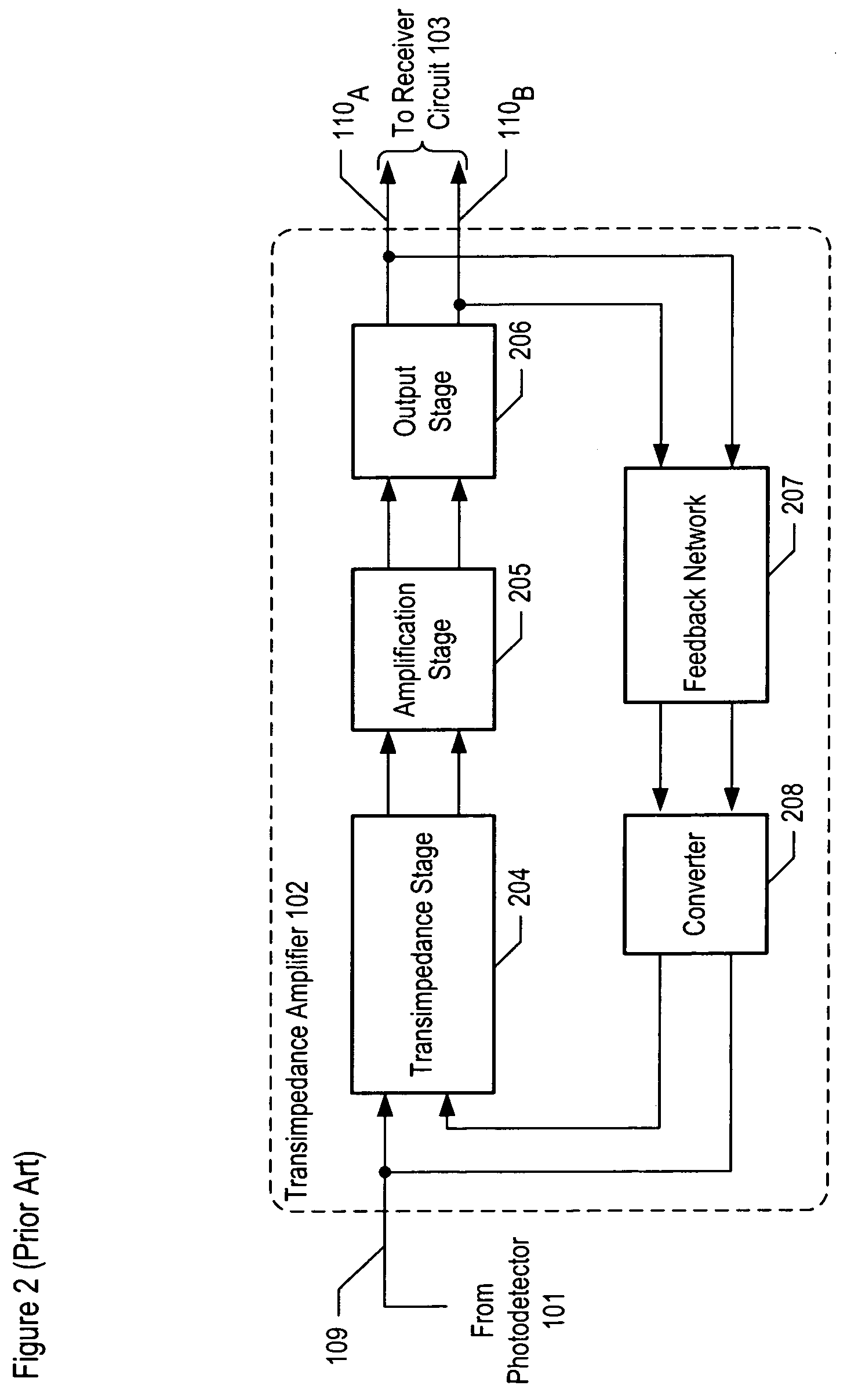Process and temperature-compensated transimpedance amplifier
a transimpedance amplifier and temperature compensation technology, applied in the field of electromechanical devices, can solve the problems of reducing the performance of transimpedance amplifiers, too much noise is introduced into the output signal of transimpedance amplifiers, and too high transimpedance gain, so as to achieve constant output and improve phase margin
- Summary
- Abstract
- Description
- Claims
- Application Information
AI Technical Summary
Benefits of technology
Problems solved by technology
Method used
Image
Examples
Embodiment Construction
[0021]FIG. 3 depicts a schematic diagram of the salient components of transimpedance amplifier 302 in accordance with the illustrative embodiment of the present invention. In accordance with the illustrative embodiment, transimpedance amplifier 302 exhibits a gain of 104 dBΩ. It will be clear to those skilled in the art, however, after reading this specification, how to make and use embodiments of the present invention that have a different gain.
[0022]Transimpedance amplifier 302 comprises: transimpedance stage 304 (comprising signal input 109, bias input 312, and output 310, amplification stage 305, output stage 206, and feedback network 307, interconnected as shown.
[0023]Transimpedance stage 304 converts a current at its signal input into a single-ended voltage signal at its output. In accordance with the illustrative embodiment, transimpedance stage 304 has a transimpedance gain of 60 dBΩ. The details of transimpedance stage 304 are described in detail below and with respect to F...
PUM
 Login to View More
Login to View More Abstract
Description
Claims
Application Information
 Login to View More
Login to View More - R&D
- Intellectual Property
- Life Sciences
- Materials
- Tech Scout
- Unparalleled Data Quality
- Higher Quality Content
- 60% Fewer Hallucinations
Browse by: Latest US Patents, China's latest patents, Technical Efficacy Thesaurus, Application Domain, Technology Topic, Popular Technical Reports.
© 2025 PatSnap. All rights reserved.Legal|Privacy policy|Modern Slavery Act Transparency Statement|Sitemap|About US| Contact US: help@patsnap.com



